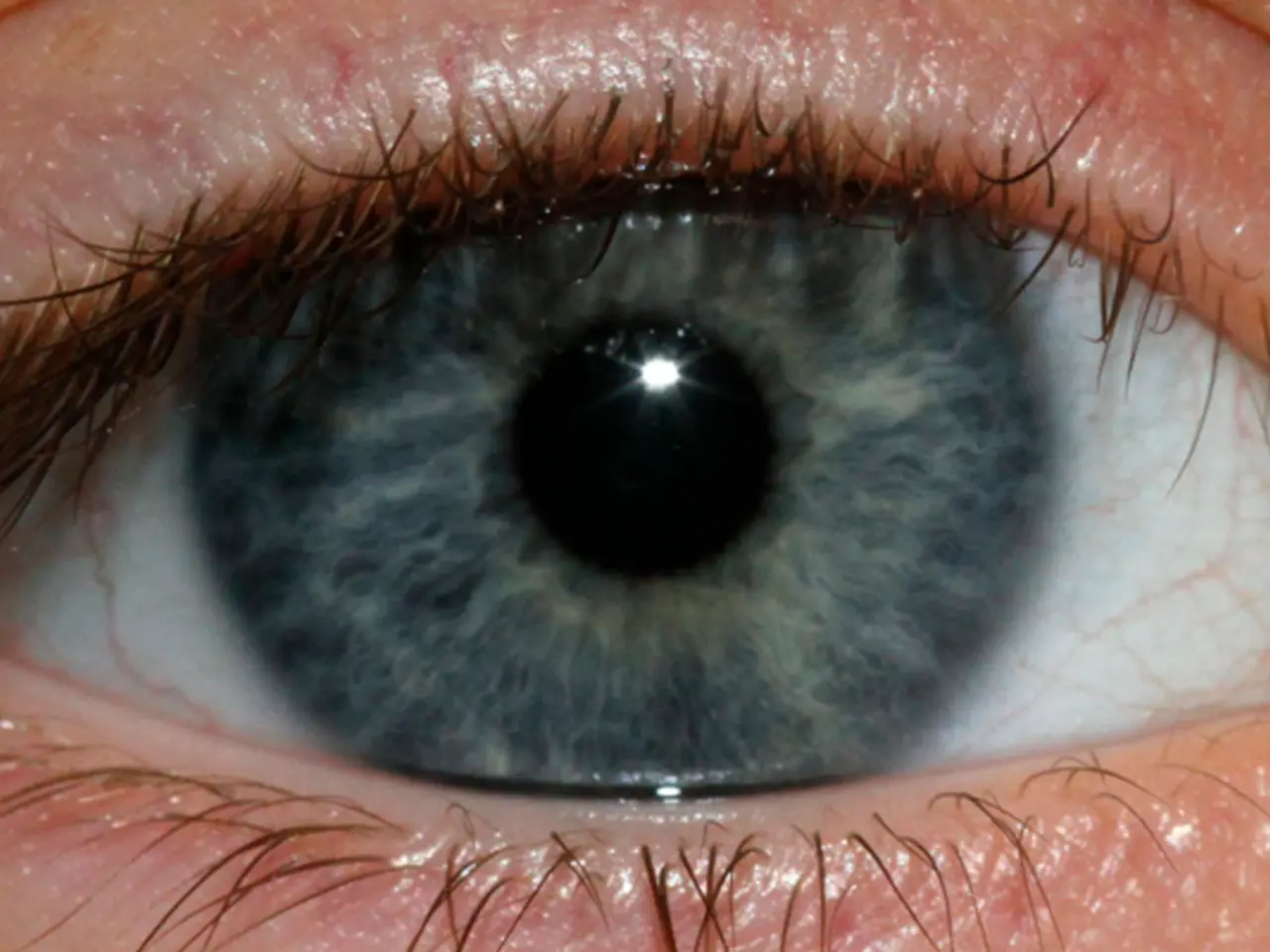Link Between Lupus and Dry Eyes: Exploring the Connection and Seeking Assistance
Systemic Lupus Erythematosus (SLE) is a chronic autoimmune disorder that can affect various body parts, including the eyes. Dry eyes, a common symptom in up to 50% of SLE patients, can be challenging to manage due to the autoimmune nature of the condition.
Common Treatment Options
The most common treatment for dry eyes is the use of artificial tears. These can be liquid, gel, or ointment, with varying viscosities to suit different levels of dryness. Low viscosity products are better for mild cases or morning use, while higher viscosity products are more effective for severe cases but may cause blurred vision.
Intense Pulsed Light (IPL) Therapy is another non-invasive treatment that targets inflammation and meibomian gland dysfunction, common in dry eye conditions. It can provide symptom relief after a few sessions, with results lasting several months.
Prescription medications like Lifitegrast have been shown to improve dry eye symptoms by reducing ocular inflammation. Although not specifically targeted at SLE patients, such medications can be beneficial for managing dry eye symptoms in general.
Lifestyle changes such as avoiding irritants, using humidifiers, and maintaining a balanced diet can help alleviate dry eye symptoms.
Managing SLE with systemic treatments can indirectly help in managing its symptoms, including dry eyes, by reducing overall inflammation.
Emerging Therapies for Autoimmune Conditions
Ianalumab, a therapeutic agent, has shown promise in treating autoimmune conditions like SLE and Sjögren's disease, which often involve dry eye symptoms. However, its direct application for dry eyes in SLE patients is still under investigation.
It's essential for individuals with SLE to work closely with healthcare providers to tailor their treatment plans according to their specific needs and the severity of their dry eye condition.
Recognising and Addressing Dry Eye Symptoms
Symptoms that suggest possible dry eyes include persistent grittiness or sandy sensation, redness or irritation, sensitivity to light, blurred vision, and discomfort when wearing contact lenses. Seeking prompt medical attention is advisable if a person notices any changes in their vision or new eye-related symptoms.
SLE can increase the risk of retinal vasculitis, a condition where the blood vessels of the retina become inflamed. People with SLE eye issues may also experience hypertensive retinopathy, a condition where high blood pressure damages blood vessels in the retina.
Individuals with SLE experiencing symptoms of dry eyes should speak with their doctor promptly. In cases of severe dryness, prescription medication such as cyclosporine or lifitegrast may be recommended. If SLE is causing other eye conditions, the treatment approach may vary depending on the specific condition.
[1] National Institute of Arthritis and Musculoskeletal and Skin Diseases. (2021). Lupus. Retrieved from https://www.niams.nih.gov/health-topics/lupus [2] American Academy of Ophthalmology. (2021). Dry Eye Syndrome. Retrieved from https://www.aao.org/eye-health/diseases/dry-eye-syndrome-list [3] American Academy of Ophthalmology. (2021). Artificial Tears and Eye Ointments. Retrieved from https://www.aao.org/eye-health/tips-prevention/artificial-tears-and-eye-ointments [4] National Eye Institute. (2021). Lifitegrast. Retrieved from https://nei.nih.gov/health/lifitegrast/lifitegrast [5] National Institute of Arthritis and Musculoskeletal and Skin Diseases. (2021). Ianalumab. Retrieved from https://www.niams.nih.gov/research-progress/ianalumab
- Chronic dry eyes, a common issue affecting up to 50% of Systemic Lupus Erythematosus (SLE) patients, can be treated with artificial tears, which are available in liquid, gel, or ointment forms.
- Lifitegrast, a prescription medication, has demonstrated the ability to improve dry eye symptoms by reducing ocular inflammation, and can potentially be beneficial for SLE patients.
- In addition to medication, maintaining a balanced diet, avoiding irritants, and using humidifiers could help alleviate dry eye symptoms.
- Systemic treatments for SLE can indirectly help manage dry eyes by reducing overall inflammation.
- Ianalumab, a therapeutic agent, holds promise for treating autoimmune conditions like SLE, although its direct application for dry eyes in SLE patients is still under investigation.
- SLE patients experiencing dry eye symptoms should work closely with their healthcare providers to develop tailored treatment plans based on their specific needs.
- Dry eye symptoms, such as persistent grittiness, redness, sensitivity to light, and blurred vision, could indicate a potential issue, prompting individuals to seek medical attention and consider therapies like Intense Pulsed Light (IPL) Therapy or other treatments and therapies for managing eye health, mental health, nutrition, skin care, and neurological disorders.




